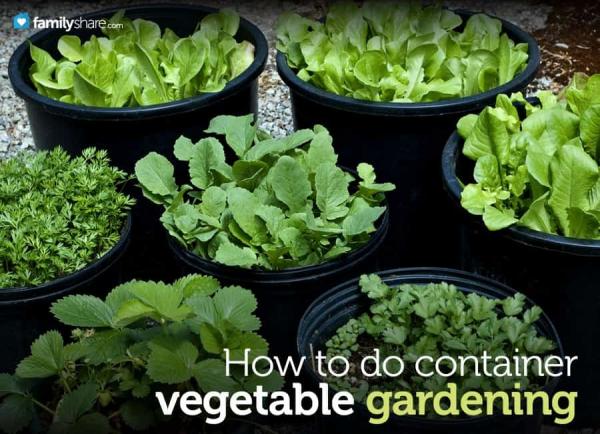
Gardening is a hugely popular pasttime that can bring you countless hours of enjoyment. Vegetable gardening can go beyond hobby status, and become a viable source of fresh nourishment for your family. But what do you do if you don't have a nice big garden plot, or even any planting room at all?
Many apartment and condo dwellers enjoy gardening through the use of containers. Pots can be placed on doorsteps, patios, decks, or balconies - indeed, any place that gets some sunshine is a possible home for a container garden.
Here're some hints on how to get started.
Choose the right plants
Some plants do better in containers than others, so carefully think about what you'd like. Big plants such as corn or large squash are difficult to grow in containers, while plants that take up little room such as carrots or radishes are good choices. Peas, tomatoes, lettuces, and herbs are other popular ideas.
Choose the containers
Not surprisingly, bigger is usually better when it comes to choosing a container. Small containers dry out quickly, so they'll need more attention. A larger container can hold several verieties of plants at once. Just choose plants that require the same amount of water and light, and they'll be happy neighbors. You can use nearly any type of container as long as it has drainage. If you have something you'd like to repurpose into a vegetable container that has no drainage, simply drill some holes into the bottom. For additional help with drainage, you can also put a layer of rocks in the bottom of your container before adding the soil.
Choose the right soil
Buy good quality potting soil rather than using dirt from your yard. Most potting soils will have the fertilizer needed for your plants to thrive mixed right in, and you won't have to fertilize until a few months down the road. Potting soil also has other ingredients that help keep it loose and uncompacted-plus, you won't accidentally introduce weeds or pests to your garden.
Choose your fertilizer
When it's time to fertilize your plants, choose a fertilizer type that is right for vegetables, rather than for flowers or houseplants. A free, great source of fertilizer is to use the water from your aquarium when it starts to get dirty.
Choose between seeds and bedding plants
You have the option of planting either seeds or bedding plants. Seeds are almost always cheaper, but bedding plants give you a head start toward harvest. Some plants, like carrots and radishes, are best grown from seed.
Choose a place with plenty of sun
. Most vegetables like as much sun as you can give them. Rotate your containers as necessary, according to the amount of sunlight or shade you have to work with.
Container gardens have the advantage over traditional gardens when it comes to surviving bad weather. If you hear of an early frost on the way, you can pull your plants indoors overnight until the danger is past. In some areas, you can prolong your harvest much longer than you would normally expect.
Start a small container garden, and you too will be able to enjoy fresh produce at a minimal cost.

